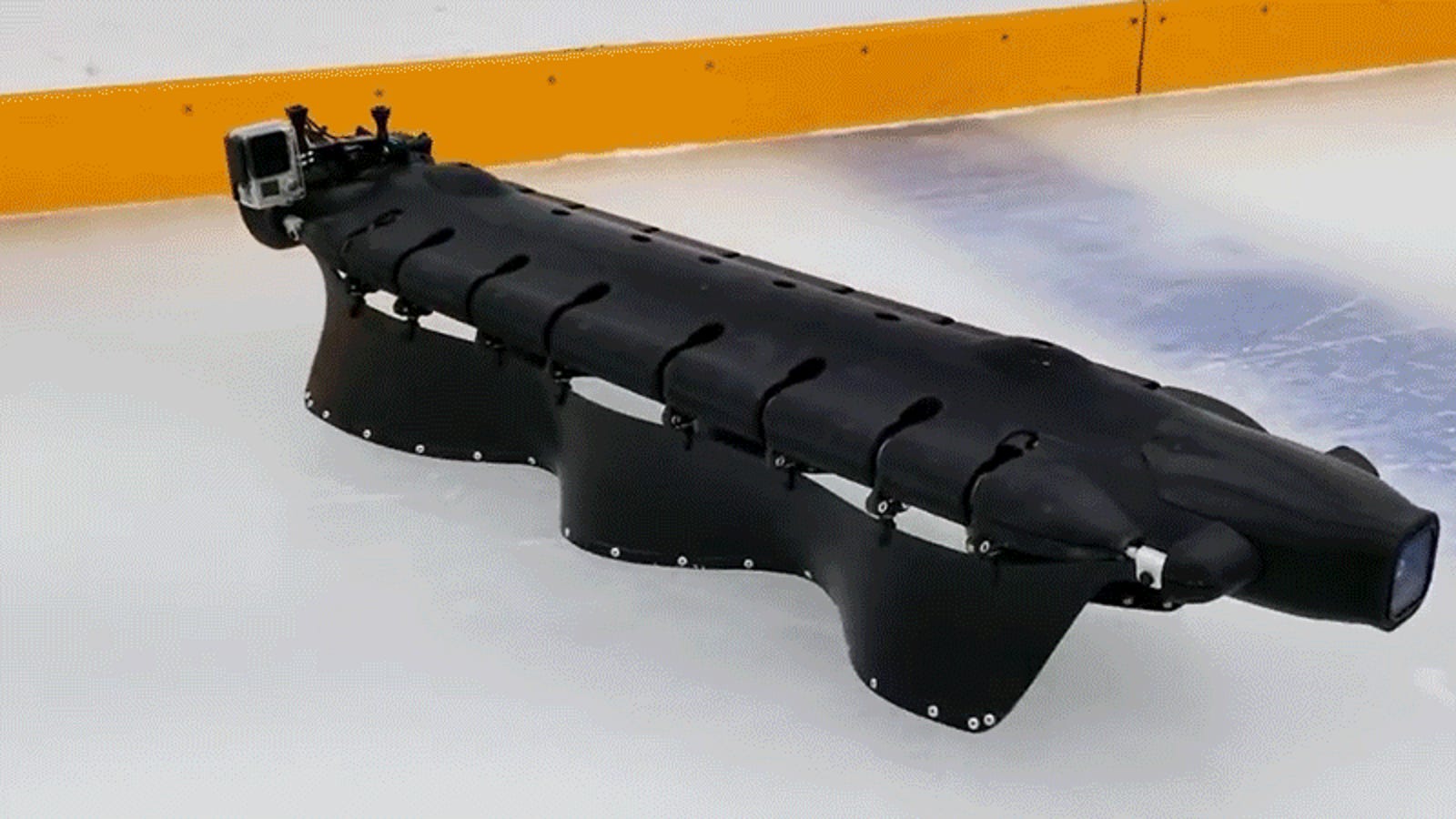https://gizmodo.com/this-wiggling-robot-could-chase-you-on-land-and-underwa-1831001680

Copying one of Mother Nature’s designs is a clever shortcut when building robots that need to navigate our complex world. But those designs aren’t always adaptable—a fish can’t do much when it’s out of the water. Adding some human ingenuity, however, results in the best of both worlds; a robot that swims like a fish, but can also use its fins to get around on land.
A lot of robotics research today focuses on making automatons that can assist with tasks that are simply too dangerous for humans to perform. That can include search and rescue missions in areas that have been devastated by war or weather, or inspecting facilities like nuclear reactors that have suffered incidents making them too radioactive for humans to enter. Because both possibilities are fraught with unknowns, these robots have to be engineered to handle all types of terrains and obstacles.
The Velox robot, designed and built by an engineering firm called Pliant Energy Systems, is reminiscent of Festo’s BionicFinWave robot that was first revealed back in June. Festo’s creation emulates the movements of undersea creatures like cuttlefish using a pair of long, undulating silicone fins powered by just two servo motors. The BionicFinWave robot can deftly maneuver underwater without any cords or tethers, but that’s the only environment it was designed for.
Velox appears to share a lot of design and engineering elements as Festo’s BionicFinWave robot, including the use of two long, flexible fins that power its motions. But instead of just two servo motors, those fine are each powered by eight actuators that increase its strength and rigidity as needed. When underwater, Velox can gracefully swim like a fish, but on land it can also pivot those fins so they instead serve as a series of makeshift legs allowing it to move around like a millipede.
On less rigid surfaces, like snow or sand, the Velox robot can actually use a combination of its two propulsion methods to ‘swim’ through the small particles, making it suitable for even muddy situations where four-legged autonomous robots might find themselves quickly getting stuck.
For the time being, Velox serves as a proof-of-concept for its technology and novel drivetrain system, and Pliant Energy Systems has no plans to start churning them out for rescue personnel to add to their toolset. But its unique design shows that robots could effectively be employed to the coldest and most inhospitable places on Earth, without the risk of them getting trapped in snow, or just slipping and falling on ice and damaging hundreds of thousands of dollars worth of technology in the process.
via Gizmodo https://gizmodo.com
December 11, 2018 at 10:54AM
